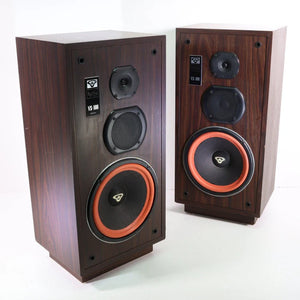We are unable to reply to comments, so please message us directly if you have a specific question regarding products, shipping costs, etc. Our office number is (480) 207-1511. Our email is hello@spencertified.com. You can also message us on Facebook. Commonly asked questions and answers can be found on our FAQs page here.

WHAT IS HDMI PASS-THROUGH AND HOW DOES IT HELP YOU?
DEFINITION AND PURPOSE OF HDMI PASS-THROUGH
When browsing for receivers, you may have noticed a feature termed “HDMI Pass-Through.” HDMI (High-Definition Multimedia Interface) is a standard for transmitting digital video and audio signals from a source (such as a gaming station) to a monitor or television. Receivers with HDMI connections make it easy to hook up your devices. They’re versatile and almost everyone owns a spare HDMI cable or two.
But some HDMI audio/video receivers also have a bonus feature: HDMI pass-through. This is a super convenient feature that’s great to keep an eye out for when you’re shopping receivers. So let’s find out what it is and why it may benefit you.
WHAT IS HDMI PASS-THROUGH?
HDMI pass-through easily transfers audio and video signals from a high-definition source, like a Blu-ray player or cable box, to your home theater receiver via an HDMI cable. Then the home theater system plays the audio through its own speakers and sends the unchanged video to your TV through a second HDMI cable. So instead of the device decoding the audio, it sends it as raw data to your theater system to do the decoding instead.
Conveniently, the HDMI pass-through feature even lets you do this while in standby mode. So even when it is off (in “standby” mode), the receiver will continue to pass audio and video signals through HDMI, which is a great flexibility feature if you’re wanting to use your television’s built-in speakers instead of your home theater system’s speakers. Such as when you don’t want to wake up your whole house - and neighborhood - with that banging subwoofer under your couch.
DO YOU WANT IT?
So what does this technology actually mean for you?
Well, it’s pretty convenient: it provides a simple, easy, and straightforward method of sending HD audio formats in digital form with just a couple of HDMI cables. It also passes digital 1080p video signals from your device to your television without altering the signal. The bottom line? You get top-quality video and audio formats - all in digital and high-definition.
In short, if you have a respectable external audio system and aren’t going for an old-school vintage receiver, then yes, you want HDMI pass-through.
HOW DO YOU CONNECT THE CABLES?
If your audio/video receiver has HDMI pass-through, it’s simple to connect everything! Keep in mind that the receiver needs at least one “HDMI IN” port for the external device and one “HDMI OUT” port for the TV.
All devices used must be connected via HDMI cables. First, connect your external device (like your Blu-ray player) to the corresponding HDMI IN port on your receiver using an HDMI cable. Then using another HDMI cable, connect your receiver to your television using the HDMI OUT port. Then you’re ready to set it up.
Each brand and model is different. Check your owner’s manual to see how exactly to set HDMI pass-through up properly on your device. But here’s an example of the steps you would take for your standard Sony receiver:
- Press the HOME button on the remote control.
- Select Settings.
- Select HDMI Settings.
- Select Pass Through.
- Select Auto.
Note: If multiple HDMI devices are connected to the A/V receiver, the priority is given to the last device used before the receiver was turned off.
However, keep in mind that HDMI pass-through does not work with all devices! Make sure your device supports HDMI pass-through before you try setting it up for an HDMI pass-through connection.
SUMMARY
HDMI pass-through is a great feature that lets you output the HDMI audio/video signal from a source to the TV, even when the receiver is in standby mode. Knowing what it is and how it works will hopefully help you make the best choice possible the next time you’re shopping for a new device for your home theater setup.
Thanks for reading! If you’re interested in checking out our HDMI receivers, you can find them here. All our other amplifiers you can browse here. Have a great day!
https://spencertified.com/collections/stereo-receiver-amplifiers/HDMI






Comments
Leave a comment